#Marunouchi Line
Photo

Tokyo Metro Marunouchi Line entrance.
217 notes
·
View notes
Text
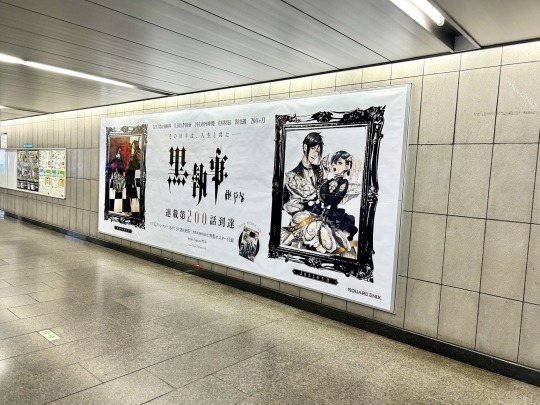
So if you are in Tokyo, Japan, these days, you might want to see this special commemorative poster on your commute.
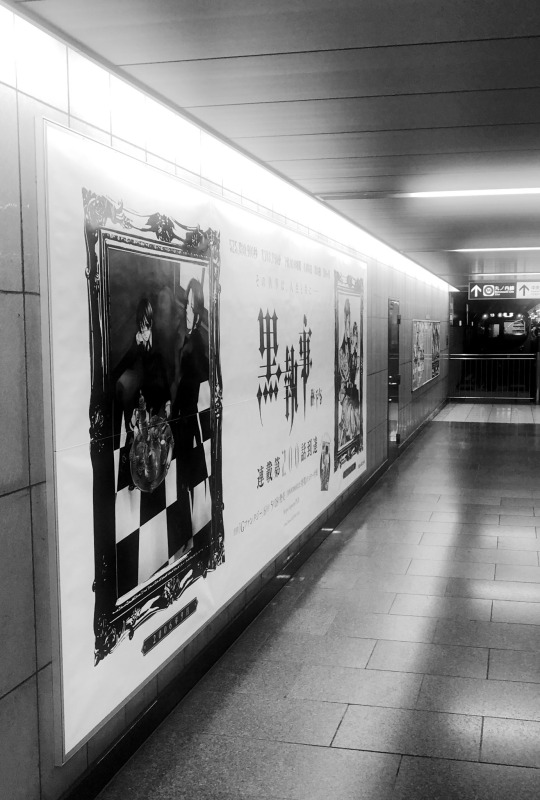
Coming May 18th. In the monthly G Fantasy June issue, #Black Butler reached 200 episodes of serialisation🎉 To commemorate the 200th time, a special poster will be posted in the underground passage of Ikebukuro Station🍴※Only those who commute to school on the Marunouchi Line to Fukutoshin Line can see it, but I will upload a photo at a later date. ※It is from May 15th to 21st. ※Please refrain from contacting the station staff.
( k )
#kuroshitsuji#black butler#sebastian michaelis#ciel phantomhive#yana toboso#art#200th chapter#chapter 200
210 notes
·
View notes
Text
La Maison du Chocolat
No matter how different books are, they always cause the very same feeling. Their smell, the sound of rustling pages, the weight in your hands – it is familiar and welcoming, inviting you to escape this noisy, confusing world outside. You can allow someone else to take you on an adventure with them, be it something exciting or dangerous or romantic. All you have to do is stick to the protagonist and watch how things unfold, with no need to make any moves or decisions yourself.
And most importantly: those protagonists don’t scold you for placing the book down mid-sentence, during a huge fight, not finishing an important business. They won’t be mad at you if you pick up another book instead, forgetting about the first one for weeks until you find it again in the pile of promising stories on your nightstand.
Book stores are a wonderful place as well, because it is completely valid here to skip pages and read a couple of sentences until you move on to another book that looks as if it contains a good story, or to simply watch the covers and admire the art on them. It is usually quite silent since people are minding their own business and if they talk, it’s mostly a low murmur, with no loud shouts or music distracting you.
This time, only the sound of your phone brings you back to reality, causing you to close the book you’re currently holding and drop it onto the table next to you.
The image on the screen shows a certain blonde, and just like always, you try not to get lost in the dark eyes of his. You would have stared at them for hours, completely ignoring the jingle, if it wasn’t for an elderly lady throwing dark glances at you because your phone keeps interrupting the silence.
“Oh, hi?” you eventually whisper, taking the call.
Chishiya sighs on the other side of the line. “Care to tell me what happened to the living room?”
“The living-?” It’s typical for Chishiya to skip any kind of formalities and go straight for the important part, but it also confuses you for a moment because you take a while to understand. And once you do, you swallow down the urge to hit your face against the book shelf closest to you.
“Ohhh…” you answer, trying to explain, “I-… You see, I wanted to clean the living room. See if I could tidy out some things. And when I got to the big cabinet, I found all the old photo albums that we never fully organized.”
You can imagine Chishiya standing there, between dozens of opened albums and at least a hundred photos flying around loosely because they have never been stuck in correctly.
The blonde snorts, not at all convinced by your story. “Well, if you intended to organize them, you failed.”
“I… I wasn’t finished yet! You see, the piles do have a meaning. Childhood photos from you, childhood photos from me, vacations, everything’s sorted. But neither did we have enough albums to put them in correctly, nor was there any tape left.”
“So you went for some tape shopping.”
You look around the store, shrugging sheepishly although Chishiya can’t see it. “Yeah… no. I wanted to go to Marunouchi, but there was this little book store on the way to the Metro station...” The shopping mall isn’t exactly close to your home, and all these books almost shouted at you to stop here, looking much more inviting than something several blocks away. “Did you know they already have the newest release of that one manga you used to read?”
It must sound weird to Chishiya. You messed up the entire flat because you completely got lost in skimming through old memories, and now you’re admiring book covers and beautiful protagonist names, having entirely forgotten about the albums. But the truth is that the photos were interesting as long as you sat there, surrounded by them, and now that they’re out of sight, they have been replaced by fantasy novels and mangas and whatnot.
Through the phone, you can hear the rustling of paper, as if Chishiya is tidying up the piles so he can at least halfway move through the living room. “I’m not reading much lately”, he mutters, “but are you still going to get that tape? Or can I put this mess back into the shelf where it belongs?”
What a shame it’d be if all the work you already put into organizing the photos was for nothing. It took at least two hours to inspect all the photos and find a good way to sort them, and if Chishiya put them back now, you would have to start all over again.
On the other side, the shop is still quite the distance to walk, and it’s getting late… You don’t know if you could still find the motivation to finish this today. “Maybe I can do it tomorrow”, you propose, knowing full well that it might take months to find the needed motivation for this again.
Chishiya knows that, you can hear it in his sigh. “Marunouchi, you say? Might be worth going there now and stopping at La Maison du Chocolat. As far as I know, they’re closed tomorrow.”
You inhale sharply. That’s the chocolatiere selling the best macarons and pralines all throughout Tokyo, and they also have a splendid choice of pastries. A bit more expensive than what you can buy in any normal grocery, but the taste is so worth it! They close early in the evening, but if you hurry, you can still make it in time.
“Bring some crispy pralines”, Chishiya requests. “Oh, and- “ he’s calling your name just as you want to hang up the phone, “- don’t forget your albums and tapes.”
With the image of mouth-watering confectioneries in your mind, you quickly put away the books you had been looking at, still being glared at by the old lady who obviously doesn’t approve of phone calls. As if you had been in a library!
You leave the book store and head to Marunouchi district. Yuurakuchou station is only a few stops from the closest subway entrance, and the train isn’t as crowded as you feared it would be. Sure, there’s no seat left during rush hour, but at least you’re not pressed against some sweaty, smoke-covered stranger this time. Public transport is a blessing until you meet the most disheveled residents of Tokyo, although none of them seem to be in your train now. Instead you notice a woman having a conversation with a friend, and while you don’t get most of what they’re talking about, her voice is so calm and soothing that you could have listened to it for hours. You wonder if she knows about that, if she works as something that requires usage of her voice or if she isn’t aware at all. It’s so mesmerizing that you would have almost missed your stop, and you rush out of the train just before the doors close again.
From Yuurakuchou, it is just a few minutes walk until you reach the chocolatiere. A chocolate-colored front greets you, and the smell inside is so sweet that it feels as if you’ve already eaten a ton of sweets only by breathing in. Wonderful.
An entire wonderland of macarons, éclairs, mousse cakes, pralines, truffles and so much more greets you. Heart-shaped gift boxes filled with the most soul-warming treats, and dark chocolate as well as nut mixes or ones containing alcohol. They even have fruit bars for those who don’t want the rich chocolate taste, but today, you’re here for the full experience.
The nearing closing time is a reminder for you not to get lost in between all the stuff, and you make sure to grab Chishiya’s crispy pralines and the pastries you love so much before anyone can throw you out the store. You can’t leave without buying a handful of other things though, because they look so promising that you have to try them. It will be a blast to eat them together with Chishiya on the sofa tonight.
Hands full of sweets and one bonbon already in your mouth, you make your way back to the subway station when your phone beeps, indicating a message has come from your blonde.
You switch all bags to one hand so the other can take out the phone, and you laugh out loud when you read the words on the screen.
‘Albums and tape. Don’t forget.’
Chishiya knows you so well, it’s almost scary. The pastries have been your motivation to actually go to Marunouchi, and now you would have almost left without the things you intended to buy in the first place.
Still laughing, you turn on your heels and search for the shopping mall that sells the photo tape and the albums. How embarrassing it’d be to get home without them and being mocked by Chishiya. But he’s already fully aware; otherwise he wouldn’t have sent you a reminder with perfect timing.
Oh, how good it is to have a boyfriend like Chishiya Shuntarou.
94 notes
·
View notes
Text
Chiyoda Division 📈

source of header image
狂音INC. (read as KURUNE INCORPORATED) Is a rap group representing the Chiyoda division consisting of the CEO and division leader Fusao Ise, electronics design engineer Raiden Otoha, and graphic designer Chiyuri Seiguni.
The group’s colour is corporate blue(#3669ad), blue is a colour often used for corporations as it symbolises trust and reliability, the members also generally think it’s a nice colour.
The group’s logo is a speaker, their company’s best selling product.
The group’s symbol is a line graph which to them, symbolises uncertainty, may that uncertainty be of their company or of their daily lives. Every member has some kind of line graph on them and they all show different data, Fusao has it as a pin on his scarf (in an unstable state), Raiden has it as a tattoo on his neck (resembling heartbeat) and Chiyuri has one printed on his vest (constantly rising).
The group’s hand sign on the Rhyme Anima would be them making something similar to the finger heart on their dominant hand, except the middle finger is also in a similar position as the index, this gesture is often associated with money.
The group’s name, 狂音INC. translates to “crazy sound inc.”, this name was picked out by Raiden, it doesn’t really mean much… I think.
They appear to be just a group of typical businessmen at first however they are… ▇▇▇▇▇▇▇
They have established mutual trust and respect for each other that goes beyond their office work life
Chiyoda is a special ward in Tokyo Prefecture, it’s Japan’s political centre where the Imperial Palace is; it also houses the business district Marunouchi, where major companies like Mitsubishi and Hitachi lay their headquarters on.
Hypmic oc blog ran by @snowberry-raspberry
#hypmic oc#hypnosis mic oc#hypmic#hypnosis mic#Chiyoda division#kurune inc.#fusao ise#raiden otoha#chiyuri seiguni#intro post#the return
8 notes
·
View notes
Text
At this rate I'm going to memorize the Marunouchi Line better than my own train lol
4 notes
·
View notes
Text
"Tokyo: Ochanomizu
For Manfred, who told me that this view is the one which contains everything what he associates with Tokyo. And one can understand this in some sense, I think. There're so much things to be seen typical for this city in it. First of all maybe the train tracks crossing here on three different levels, the yellow Sobu line, the red Chuo line and below of them the Marunouchi Line crossing the Kandagawa. And the buildings, the contrast of the small and old ones along the river and the high and colorful buildings in the background, marking the border between Ochanomizu and Akihabara."
4 notes
·
View notes
Text
Enzo watches him bolt with mild amusement, until something large and square flies out of one of the backpack's pockets, hitting the station tiles with an audible "thunk." The sound, however, does not reach the boy's ears with the clinking of his backpack overpowering everything else.
Enzo looks around, before darting for the object. To his horror, what he picks up is a cell phone. He looks back up, and the teenager is already a considerable distance away.
"Wh-- Hey!" Enzo calls out, and breaks into a run of his own. "Wait! You dropped your phone!"
But the teen doesn't hear Enzo, too focused on making it to his destination in time-- wherever that may be. It looks like he's making a run for the Marunouchi line.
"Kid!" Enzo exclaims, but a sudden wave of people prevents him from making much headway, not to mention he can't risk bumping his broken arm into anything. By the time he pushes through, it's too late; the teenager has just barely caught the train, and the car drives away as Enzo slows to a defeated walk.
"Ah, damn..."
In Chapter 6 of "'Having Lived and Loved' B-Sides," The Hero Nirvana is stuck with a phone that's not his. He tries to uphold privacy until he can turn it in, but as they say about curiosity...
#bnha#boku no hero academia#mha#my hero academia#all might#toshinori yagi#fic#fanfic#fan fic#fiction#fan fiction#all might/reader#all might/oc#all might/self insert#having lived and loved#dylawa writes#bnha comet#mha comet#ao3#archive of our own
2 notes
·
View notes
Text
椎名林檎 – 丸の内サディスティック
Lyrics: Ringo Sheena / Music: Ringo Shiina / Tr: okasiya
Marunouchi Sadistic
My wages have have been on a track to nowhere since I got hired
I love Tokyo but there’s nothing here for me
Won’t you get me a Ric 620?
I don’t have ¥190,000 for it
Ochanomizu
A bump of Marshall sends me flying, it’s a problem
That’s how I reach climax every night
I’ve got a single RAT as the tool of my trade
Then Benji fills my lungs and I trip
Recently I’ve been playing cops and robbers in Ginza
Even if you push boundaries, prosperity leads to decline
Won’t you write me a receipt?
I don’t have an accountant
Korakuen
I want you to become a monk and marry me someday
We’ll just play in the sheets every night
I’d like to become the Pizza Guy’s Girlfriend
Then Benji hits me with his Gretsch
Won’t you come for me under the stars?
If I’m going home on the last train it’s from Ikebukuro
A bump of Marshall sends me flying, it’s a problem
That’s how I reach climax every night
I’ve got a single RAT as the tool of my trade
Then Benji fills my lungs and I trip
I want you to become a monk and marry me someday
We’ll just play in the sheets every night
I’d like to become the Pizza Guy’s Girlfriend
Then Benji hits me with his Gretsch
———
I wish Tumblr made it easier to write footnotes!!!
This song is about the harsh reality of a struggling musician in Tokyo who finds escape in her love of music, framed by stops on the Marunouchi subway line. Kenichi Asai (called Benji by fans), the legendary frontman of Blankey Jet City, plays the part of a drug and an imaginary lover.
"The pizza guy's girlfriend" comes from a line in a BJC song, so SR is saying she wants to live in their music, not date a guy who makes pizza or work in a pizza parlor. This line is obscure even in Japanese but it haunts me how much it's been misunderstood by English-speaking fans.
I managed to pull a couple double meanings through but one line is absolutely impossible:
青 噛んで熟って頂戴
Phonetically, she's having public sex and asking her partner to orgasm. From the way she wrote it, it essentially says, "take a bite of the green fruit and let it ripen," speaking of her impatience to join the ranks of her musical inspirations, with a wink to her stage name.
2 notes
·
View notes
Text
Kenta Fukasaku talks about his father Kinji Fukasaku and Battle Royale
NEWS Movie theater Shibuya TOEI closed in December 2022, screening well-known and loved movies for the last time, Battle Royale being among them.
December 4, 2022
Source: nikkansports, tellerreport
INTERVIEW Kenta Fukasaku talks about the charm of legendary director Kinji Fukasaku! Special Interview / Kenta Fukasaku
December 27, 2022
Source: tvguide
Read both articles in english below ↓
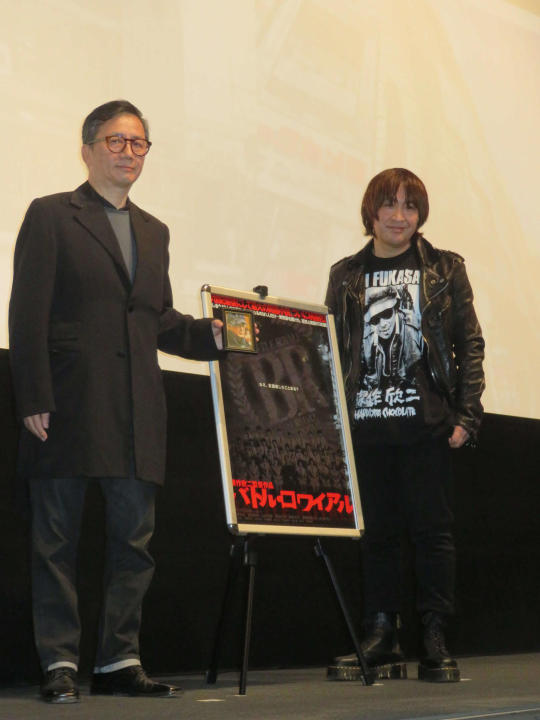
Director and screenwriter Kenta Fukasaku (Battle Royale and Battle Royale II) talks about memories of his father Kinji Fukasaku at the special screening of Sayonara Shibuya TOEI "Battle Royale". Producer of Battle Royale and Battle Royale II, Kimio Kataoka, on the left.
Toei's directly managed theater, Shibuya TOEI, which opened in Shibuya-ku, Tokyo on November 18, 1953 (Showa 28), closed on the 4th, marking the end of its 69-year history. On the same day, the last special screening titled "Sayonara Shibuya TOEI" was held. At 11:30 a.m., 1999's "Poppoya" (directed by Yasuo Furuhata) starring Ken Takakura, was screened and from 6:00 p.m., 2000's "Battle Royale" directed by Kinji Fukasaku.
At the special screening of "Battle Royale", Director Kenta Fukasaku (50), who was the eldest son of Director Fukasaku and served as the scriptwriter and producer of the film, and Kimio Kataoka (59), the producer, took the stage. Director Kenta Fukasaku said, “It was a very difficult movie to make into a movie. At the time, I was 27 years old when I first became a producer. There was considerable opposition from within Toei as well.”
On top of that, former chairman Yusuke Okada, who passed away on November 18, 2008, was the sales manager at the time, and said, "It was a work that was realized by pushing through the planning meeting. Fukasaku Kinji's works were hardly received in the 90's. It must have been a work that had a lot of discussions about whether it was okay.”
On top of that, director Kenta Fukasaku said "Battle Royale of Kinji Fukasaku was the same with 'Battle Without Humanity', and he was a director who constantly made movies for young audiences by drawing images of post-war youth. The next one may be the last... A movie that I challenged at the age of 70 as a movie for young people to see." Then, "The night before (the release), my father was very worried, and in the middle of the night, father and son quietly went to see how the Marunouchi TOEI was going. Unlike today's reservation system, there was a culture of lining up (around the movie theater) from midnight the day before. When I saw people lining up, I still can't forget the face of the old man who was sitting in the front passenger seat. Thanks to you, it was a big hit."
He also mentioned the relationship between Shibuya TOEI and Battle Royale. “As you may know, the last part ends in Shibuya. After all, Kinji Fukasaku had a lot of feelings for young people and youth culture in Shibuya. I wanted to stand on the stage in Shibuya, so I was allowed to stand on the stage greetings," he said.
INTERVIEW Kenta Fukasaku talks about the charm of legendary director Kinji Fukasaku! Special Interview / Kenta Fukasaku
December 27, 2022
Source: tvguide

Toei Channel has decided to feature Fukasaku's works for nine consecutive months from January 2023 as a memorial for the 20th anniversary of director Kinji Fukasaku's death. This time, we asked Fukasaku's son, Kenta Fukasaku, who works on movies and stage productions, about his father and the appeal of his work.
──In commemoration of the 20th anniversary of his death, the works of Fukasaku Kinji's will be featured from January. You have made many films, but do you remember the first film you saw?
“When I was 5 years old, I went to the filming location of 'The Conspiracy of the Yagyu Clan' (1978) at Toei Kyoto Studios, and for the first time I saw my father happily running around the set. After that, I also visited the site of my father's sci-fi film "Message from the Universe" (in the same year). I remember that the first work I saw was one of them. At the time, there was software on 8mm film, and my father would show it to me through a projector at home. This year was the year that "Star Wars" was released, and I saw "Star Wars" after "Message from Space", but I was stunned at why it was so different (bitter smile). However, I also thought that the sword fights in Japanese films were cooler, and that Shinichi Chiba and Mikio Narita seemed to be stronger than Darth Vader.”
── Out of the many works, which director Kinji's work do you like the most?
"The Graveyard of Humanity (1975) starring Tetsuya Watari. The main character, a yakuza, is from Ibaraki, the same place as my father. I could see my father's image of youth overlapped with that way of being. As a filmmaker, I think there was also a paternal sympathy for the world of misfits. He doesn't have a "steady" job as a film director either."
──As with "Graveyard of Humanity", director Kinji is famous for his work that depicts the life of an outlaw. What were your impressions when you first saw the most representative series, "Battle Without Humanity and Honor"?
“When I was a junior high school student, I was skeptical, but when I first saw it on video for the first time, I was reminded that Kinji Fukasaku, who makes films on the side of the weak, is a wonderful director. My father hated the strong and the power of the state. When the war ended at the age of 15, he thought he had been betrayed by what the adults said. Since then, he no longer believes in people who stand by the strong. In "Battle Without Humanity and Honor" (1973), thugs who were used by their boss die tragically, but it is also a requiem for the young people of the time who were sent to the battlefield by the country and had no choice but to die. But when I look back at my father's works, almost all of them are hymns of youth."
── When you think of teenagers sent to battlefields, "Battle Royale" (2000) comes to mind. Kenta-san was in charge of producing and writing the script.
“I bought the original book and put it on my desk, and my father picked it up. On the belt it said, ‘Murder all 42 junior high school students’, and he seemed to be interested in it. Then, after reading it, said, 'This is interesting. I want to shoot this.' In the depiction of the original work in which a student becomes a corpse, I overlapped myself and Japan during the war.
However, Toei did not immediately approve the project, and we were told, 'If you're going to shoot, take Kenta as a hostage.' My father didn't stick to budgets and schedules (bitter smile), so I guess he thought that if his son was made a producer, he'd probably stick to it. Moreover, it was difficult to decide on a scriptwriter, so he said, 'Kenta should write this too.' "
── Director Kinji was hospitalized and passed away right after he started working on the sequel to "Battle Royale." Twenty years later, do you have any thoughts about having a special feature like this one?
"During my lifetime, when we often drank together, I would say, ‘Movies seem to be immortal, but there are movies that are forgotten and those that grow old. When a film director dies, he is forgotten.' He's a beloved father, and I'm sad that he's gone, but even after 20 years, many people have seen my work, and We even organize a special feature like this one, so that people who haven't seen it yet will have the opportunity to experience the work. I think that director Kinji Fukasaku is a very happy director. Even if you have seen it before, if you review it, you should be able to rediscover it, so please continue to support us. Please look forward to Kinji Fukasaku's work."
#battle royale#batoru rowaiaru#バトル・ロワイアル#kinji fukasaku#kenta fukasaku#film#japanese movie#japanese cinema#news#interview
4 notes
·
View notes
Text
AN INTRO
Welcome to Oshare Nippon.
Oshare (おしゃれ): fashionable; stylish; a sharp, glamorous vibe.
Nippon (日本): the Japanese word for "Japan."
In the 90s and early 2000s, there was this belief that it was easy to follow Japanese style trends. At that time, Japan's fashion scene was neatly divided into tribes. The artsy kids that hang around Harajuku, the influential gyarus that made Shibuya their holy ground, the conservative fashion Marunouchi office ladies (OLs), the wealthy women from Ginza…
Every tribe had its department stores and fashion buildings. The gyarus had Shibuya 109. The Harajuku crowd had LaForet. And so and so forth. Influential fashion magazines also served as a guide for each fashion group. Forget the conceptual editorials and general lifestyle articles you're used to seeing in Western titles. Japanese fashion mags are on a whole other level, a literal step-by-step guide on how to dress and behave if you want to fit into the cool crowd. Each title has its models that serve as fashion leaders for the readers. The idea is that by following the magazine guidelines, you can also become just like them.
So yea, back then, when magazines reigned and each group had its own space, things were simple. You wanted to understand what was desirable among gyarus? All you had to do was take a stroll through Shibuya 109 and browse Popteen magazine. To figure out what fashionable office ladies longed for, you could look at JJ or CanCam for guidance. It was very straightforward.
But that was then. Times have changed, fashion has evolved, and, with the advance of social media, lines were blurred. Nowadays, things aren't as easy to understand as they once were.
There’s no more gyarus. Harajuku has been dominated by boring fast fashion stores. Fashion magazines have lost their influence as supreme 'how-to' guides. But truthfully, Japan is still just as trend-obsessed as it was in the past. And there are still tribe divisions, fashion 'it girls' catered to specific groups, and brands that come up and go down at an astonishing speed.
Instead of the streets of Tokyo's cool neighborhoods and the pages of fashion magazines, it mostly goes down… on Instagram. That means things aren't as straightforward as before. Fashion tribes can be more fluid and don't have neat titles anymore. Therefore, tracking what's in among the trend-obsessed oshare (fashionable) women from Japan can be more complex. And that's where I come in! Because that's what we're gonna do here.
Track and follow emerging trends and map out some of the current influential fashion tribes in Japan using Instagram as our guide. But we won't solely look to the present. We're also going to look back on the last few decades to try and understand how Japanese fashion tribes got to the point they're at now. Come on and join me on this ride!
6 notes
·
View notes
Photo

A Marunouchi Line in Tokyo Jaopan in March 2023.
0 notes
Text
Tàu điện ngầm Nhật Bản du lịch bằng tàu điện ngầm
Đi du lịch Nhật Bản bằng tàu điện ngầm là một trải nghiệm độc đáo, khi bạn được đưa vào một thế giới hiện đại và tiện nghi. Tàu điện ngầm Nhật Bản với hệ thống tàu hiệu quả và chính xác, du khách có cơ hội khám phá những địa điểm du lịch nổi tiếng, tạo nên hành trình khám phá đa dạng và thú vị.
Tìm hiểu tàu điện ngầm Nhật Bản
Lịch sử tàu điện ngầm Nhật Bản
Quy mô tàu điện ngầm tại Nhật Bản được phát triển đầu tiên vào năm 1927, bởi Công ty Đường sắt ngầm Tokyo. Sự phát triển của tàu điện ngầm đã chứng kiến nhiều bước tiến quan trọng như việc mở rộng mạng lưới tàu, cải thiện công nghệ và an toàn, đồng thời tích hợp với các phương tiện giao thông khác để tạo ra một hệ thống liên kết.
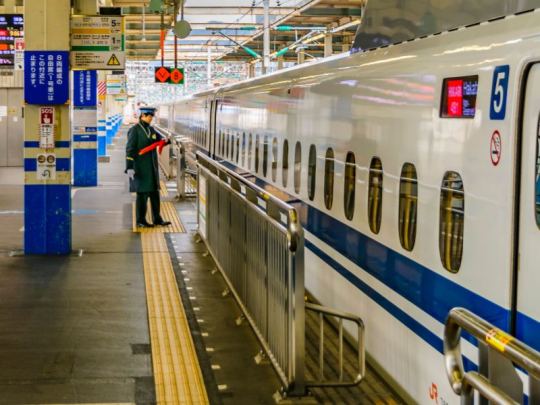
Tàu điện ngầm Nhật Bản
Đặc biệt, tàu điện ngầm Tokyo Metro trở thành một trong những hệ thống lớn nhất và phức tạp nhất thế giới, phục vụ hàng triệu người hàng ngày và đóng góp quan trọng vào sự phát triển kinh tế và văn hóa của đất nước.
Các giai đoạn mở rộng và phát triển
Vào năm 1933, tuyến tàu điện ngầm công cộng đầu tiên của Nhật Bản được khai trương, tuyến tàu điện ngầm thành phố Osaka, được khai trương giữa Umeda và Shinsaibashi.
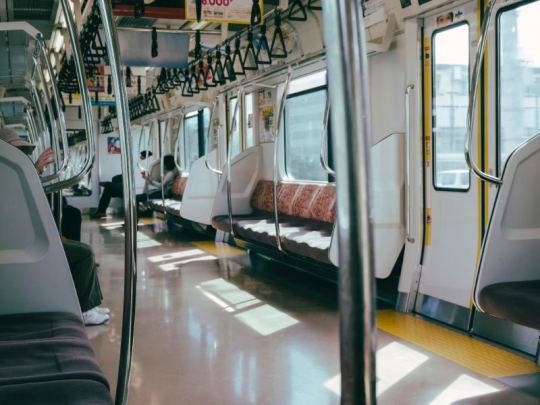
Không gian bên trong tàu
Những năm 1950 và 1960 , tàu điện ngầm được mở rộng và mở cửa để phù hợp với sự phát triển của thành phố, hệ thống này tập chung quanh Tokyo, Osaka và Nagoya sau đó lên rộng đ���n các thành phố trung tâm. Tính đến năm 2020, cơ sở hạ tầng giao thông cần thiết cho các hoạt động đô thị, với chiều dài tuyến đường hoạt động 851,5 km từ Hokkaido đến Kyushu với hàng triệu lượt khách mỗi ngày.
Công nghệ và cơ sở hạ tầng tàu điện ngầm
Với sự đầu tư mạnh mẽ vào nghiên cứu và phát triển, hệ thống tàu điện ngầm Nhật Bản không chỉ áp dụng những công nghệ tiên tiến nhất trong việc sản xuất và vận hành, mà còn liên tục nâng cấp để đáp ứng sự tăng cường cả về quy mô và yêu cầu chất lượng.
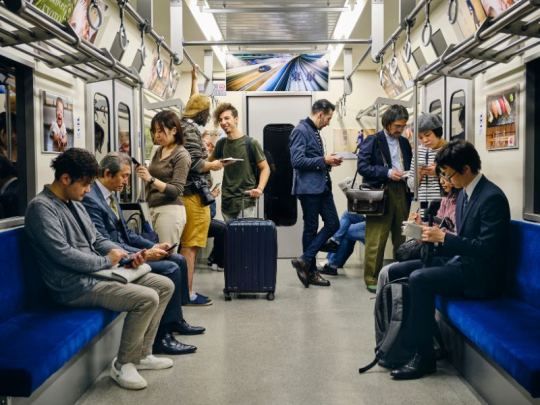
Khách hàng sử dụng tàu điện ngầm
Cơ sở hạ tầng tàu điện ngầm được xây dựng với độ chính xác cao, bao gồm các đoạn đường chống động đất và cấu trúc an toàn. Hệ thống giám sát và điều khiển tự động giúp duy trì lịch trình chính xác và an toàn, đồng thời tối ưu hóa quy trình vận hành. Việc tích hợp các tiện ích như Wifi, sạc điện thoại di động, và các tiện nghi khác cũng làm tăng tính tiện lợi cho hành khách, tạo nên một trải nghiệm đi lại hiện đại và thoải mái.
Đặc điểm của hệ thống tàu điện ngầm Nhật Bản
Tàu điện ngầm ở Nhật Bản tốc độ bao nhiêu

Tốc độ của các tàu điện ngầm ở Nhật Bản thường phụ thuộc vào loại hình dịch vụ và đặc điểm của từng tuyến đường. Tuy nhiên, nhiều tuyến tàu điện ngầm ở Nhật Bản đạt tốc độ khá cao, đặc biệt là trên các tuyến cao cấp như Shinkansen (tàu siêu tốc) và một số tuyến metro thủ đô.
Trung bình, tốc độ của tàu điện ngầm trong các thành phố lớn như Tokyo, Osaka và Kyoto có thể dao động từ khoảng 60 đến 80 km/h. Trên một số tuyến Shinkansen, tốc độ có thể đạt đến khoảng 240 đến 320 km/h, tùy thuộc vào loại tàu và tuyến đường cụ thể.
Bản đồ tàu điện ngầm ở Nhật Bản
Nhật Bản có nhiều hệ thống tàu điện ngầm trải rộng ở các thành phố lớn. Dưới đây là một số tuyến đường tàu điện ngầm quan trọng ở một số thành phố chính:
Tokyo Metro có nhiều tuyến đường tàu điện ngầm như Marunouchi Line, Ginza Line, Hibiya Line, Tozai Line, Chiyoda Line, Yurakucho Line, Hanzomon Line, Namboku Line, và Fukutoshin Line.
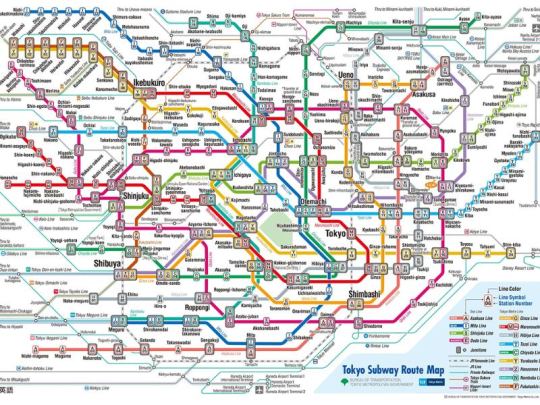
Bản đồ tàu điện ngầm Nhật Bản
Osaka Metro cũng có nhiều tuyến đường, bao gồm Midosuji Line, Tanimachi Line, Yotsubashi Line, Chuo Line, Sennichimae Line, và Sakaisuji Line.
Kyoto Municipal Subway có một hệ thống tàu điện ngầm nhỏ với tuyến đường Karasuma Line và Tozai Line.
Yokohama Municipal Subway có một số tuyến đường như Blue Line, Green Line, và là một phần của tuyến Minatomirai Line.
Fukuoka City Subway có hai tuyến đường chính là Kuko Line và Hakozaki Line.
Đây là một số tuyến đường của hệ thống tàu điện ngầm Nhật Bản. Hệ thống này thưởng xuyên được mở rộng và cập nhật để đáp ứng những nhu cầu di chuyển ngày càng cao của cộng đồng.
Cách đặt vé tàu điện ngầm
Nhờ vào hệ thống tiện ích và công nghệ hiện đại việc đặt vé tàu trở nên thuận tiện và nhanh chóng hơn. Du khách có nhiều cách linh hoạt để đặt vé, tạo điều kiện thuận lợi cho hành trình.
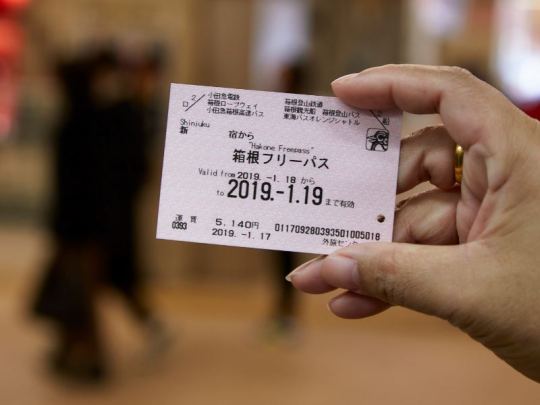
Vé tàu điện ngầm
Đối với những người sử dụng thường xuyên, việc tạo tài khoản trực tuyến trên các trang web chính thức của các hệ thống tàu điện ngầm là một lựa chọn thông minh. Tại đây, họ có thể dễ dàng tìm kiếm thông tin lịch trình, chọn loại vé phù hợp và thậm chí đặt chỗ trước cho các tuyến đường phổ biến. Ứng dụng di động của các hãng tàu cũng cung cấp dịch vụ đặt vé và thông tin liên quan, giúp du khách tự do quản lý hành trình của mình.
https://saigontimestravel.com/wp-content/uploads/2024/01/tau-dien-ngam-nhat-ban-5.jpg
Thẻ di chuyển tàu điện ngầm
Ngoài ra, các quầy vé tại các ga tàu và các máy bán vé tự động được đặt khắp nơi, mang lại sự thuận tiện cho những người muốn mua vé ngay tại điểm xuất phát. Hệ thống thanh toán thông minh cũng được tích hợp, chấp nhận nhiều phương thức thanh toán khác nhau, từ tiền mặt đến thẻ tín dụng và thẻ thông minh. Điều này giúp tạo ra một quá trình đặt vé linh hoạt và dễ dàng cho du khách khi khám phá đất nước xinh đẹp này bằng tàu điện ngầm tiện ích.
Tiện ích tàu điện ngầm
Hệ thống tàu điện ngầm không ngừng cải tiến để đáp ứng nhu cầu ngày càng tăng của cộng đồng. Hành khách có thể tận hưởng nhiều tiện ích, bao gồm Wi-Fi miễn phí, giúp khách hàng kết nối với thế giới trong suốt chuyến đi.
Các ga tàu thường trang bị khu vực sạc điện thoại di động, giúp du khách duy trì liên lạc mà không lo lắng về pin cạn kiệt. Bảng thông tin điện tử cung cấp thông tin chính xác về lịch trình và các thông báo quan trọng, đồng thời hệ thống thông tin đa ngôn ngữ giúp người du lịch dễ dàng điều hướng trong mạng lưới tàu điện ngầm phức tạp.
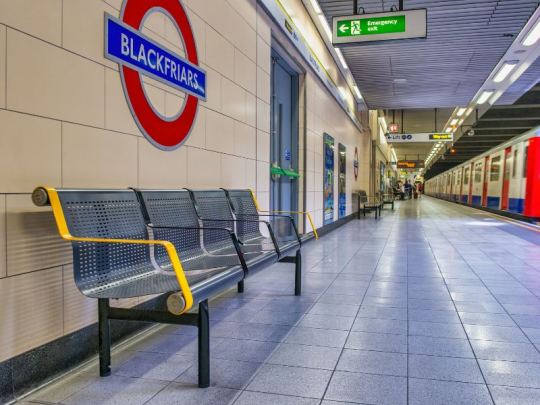
Hành lang cho khách hàng đợi tàu
Thêm vào đó, dịch vụ đặt vé thông qua ứng dụng di động và khu vực giữ xe cho các phương tiện cá nhân tạo ra trải nghiệm di chuyển thuận tiện và linh hoạt. Từ những tiện ích này, tàu điện ngầm Nhật Bản không chỉ là một phương tiện vận chuyển, mà còn là một phần quan trọng của lối sống đô thị hiện đại và tiện nghi.
Những tiện ích này cùng với việc duy trì một hệ thống an toàn và hiệu quả đã làm cho tàu điện ngầm Nhật Bản trở thành một phương tiện giao thông công cộng phổ biến và tiện lợi.
Du lịch bằng tàu điện ngầm Nhật Bản
Du lịch Nhật Bản bằng tàu điện ngầm là một hành trình tuyệt vời, mở ra trải nghiệm độc đáo và thuận tiện trong việc khám phá văn hóa đa dạng và phong cảnh tuyệt vời giới thiệu về đất nước Nhật Bản. Hệ thống tàu điện ngầm hiện đại và hiệu quả không chỉ là phương tiện vận chuyển, mà còn là cánh cửa đưa du khách đến với những điểm đến đa dạng.
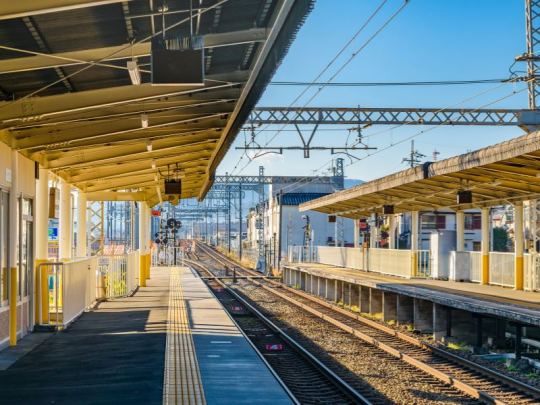
Từ trung tâm thị trấn sôi động như Tokyo đến những thành phố truyền thống như Kyoto, tàu điện ngầm giúp du khách dễ dàng di chuyển và khám phá các địa điểm du lịch nổi tiếng. Mỗi ga tàu điện ngầm là cổng vào thế giới đầy ắp lịch sử, nghệ thuật, và ẩm thực độc đáo tại “Xứ sở hoa anh đào”.
Hành trình qua các khu vực đô thị, quận mua sắm, và ngôi đền lịch sử trở nên thuận tiện hơn bao giờ hết. Sự tiện lợi và hiệu quả của tàu điện ngầm không chỉ giúp du khách tiết kiệm thời gian mà còn mang lại trải nghiệm du lịch linh hoạt và không ngừng.
Du lịch Nhật Bản theo tour
Du lịch Nhật Bản thông qua tour là cách tuyệt vời để khám phá văn hóa độc đáo và đẹp như tranh của “Đất nước mặt trời mọc”. Các tour được tổ chức chặt chẽ giúp du khách trải qua hành trình một cách thuận lợi và không gian. Bắt đầu từ thành phố hiện đại Tokyo, du khách có thể khám phá những khu đô thị sáng tạo, thưởng thức ẩm thực phong phú và thăm các trung tâm mua sắm nổi tiếng.
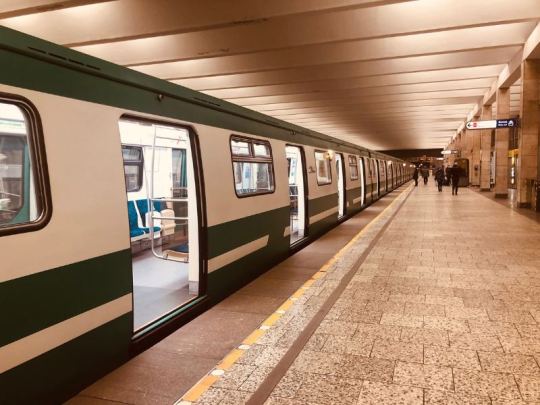
Tour du lịch cũng đưa du khách đến các thành phố truyền thống như Kyoto, nơi họ có thể tham quan các đền chùa lịch sử và tận hưởng không khí yên bình của những khu vườn truyền thống. Điều đặc biệt là tour thường bao gồm việc trải nghiệm các sự kiện văn hóa như lễ hội truyền thống, nấu ăn sushi hoặc thậm chí là tham gia vào các buổi lễ trang trí kimono truyền thống.
Với tốc độ và tiện nghi vượt trội, tàu điện ngầm không chỉ là phương tiện di chuyển, mà còn là một phần không thể thiếu trong cuộc sống hàng ngày và chìa khóa mở cửa cho một cuộc phiêu lưu không ngừng trong xứ sở mặt trời mọc. Mong rằng qua bài viết SaigonTimes Travel đã giúp cho khách hàng hiểu hơn về tàu điện ngầm Nhật Bản.
0 notes
Text
Foliage



The station is close to Iidabashi, but Korakuen on the Marunouchi line is not far away. The Kanda River runs thin, and Toppan Printing Co. is next door. Above all, to be able to walk to Sanntora, a famous Hokkaido ramen restaurant, is something to envy.
87.8 million yen, built in 2005
Iidabashi 10 min. walk, 58m2 2LDK 7th floor
0 notes
Text
Day 13 Ikebukuro
This morning I very clearly noticed that exhaustion was catching up with me. My husband had left fairly early to grab some stuff he left at my brother's place, while I was left to snooze in bed. In the end it was nearly noon before I actually left the hotel, with the overwhelming feeling that, "I'm not feeling it today, I wanna go back to bed."
This truth of thia mood became extremely clear when it took me a few minutes too long to realize I could not find the train I wanted to take, because I was lurking around at the Asakusa Line platforms, rather than the Oedo Line platforms. To make it worse, I could not even reach the Oedo Line from my current location. Not without checking out of the station first!! (This is probably the first time I encountered a station that services two lines, but they are not connected in any way.) So, I had to explain to the staff member at the gates I messed up, and he kindly let me out and even gave me a (preprinted) tiny map with directions to the right entrance. Guess this thing happens more often...
On my way to Ikebukuro I was! Just to mess up again... I had to transfer and very diligently followed the signs to the Marunouchi Line. I took notice it said I had to turn right and immediately assumed this meant: turn right after the gates. Since I checked out after leaving the Oedo Line, it made sense to me that I needed to check in again, but... Nope, I should have turned before the gates! I was apparently still in a state of being checked-in, as far as the metro system was concerned. So... I suddenly found myself very much outside the station and had to shamefully turn around and check in again... Wasted about 60 yen there!
Eventually I did make it to Ikebukuro to do some shopping and it was nice to just browse around without my husband trailing behind me.
This trip also made me realize how our of touch I am with the recently popular series. I barely recognized anything in the animate (or other stores for that matter)! It did make my trip a pretty cheap one as a result! In the end I only bought a couple pokemon figures and some manga.
Around 5PM-ish I called it a day and returned to the hotel, grabbed some take out from the McD. (Husband was out eating with a friend.) Although I was very tempted to visit the Sukiya next door, to try the special nabe meal set they were advertising. Another time! I kinda felt like eating fastfood. And there still were some burgers I wanted to try. I wonder why it feels like the Japanese burger selection at McD is so much more suited to my tastes... And they are so cheap! 220 yen for a burger!? (Fine, they are a bit smaller than tje average burger here in the Netherlands... But still!)
Rest of the evening was spend messing around on my phone.
I didn't take any photos today, so... Please enjoy some photos I took the day before of the view from our hotel room!


1 note
·
View note
Text
List of media coverage:
Japan Media Coverage:
Japan billboard ad agency for: …. Out of home / OOH
Billboards
Wall
Rooftop static
Rooftop neon
NE´X Narita Express train from airport to city
Train wrapping
KIX Kansai airport express train- The Nankai Express + Namba station
Digital out of home DOOH
All Japan airports – Narita – Haneda – Kansai – Chubu – Hokkaido – Kobe – Chitose –
Mall
Taxi cab
Train station
In Train ad spaces
Bullet train and Shinkansen stations
Hotspots– Shibuya crossing, Dotonbori, Kyoto Kawaramchi, Shinjuku, Harajuku, Ikebukuro, nightlife, Tokyo CBD-Otemachi, Tokyo station, Ginza, Omotesando hills and Aoyama fashion zones
Magazines
Professional ad design advice for max impact
Newspapers
TV and cable channels nationwide
Other media – Inquire
The Sovereign super reach:
Tokyo advertising agency reach whether you are a local agency or a brand seeking OOH planning services in Japan and the region, our company brings 16 years of expertise to the table. When you think regional media planning professionals- you think Sovereign Ad! We offer a comprehensive solution, allowing you to consolidate your advertising needs under one roof with a single brief. This streamlined approach eliminates the complexities of engaging with multiple local agents who may have limited English proficiency and regional connections. As your billboard ad agency in Japan, we are readily available to provide you with a wide range of advertising choices.
Our company offers an extensive selection of advertising spaces throughout Japan, including OOH, indoor, transit, airport, and digital formats. We meticulously plan your media buy, incorporating various formats such as billboards, wall displays, kiosks, digital signage, as well as advertising opportunities at major airports like Narita, Haneda; Kansai and Chubu. Additionally, we cover metro subway lines, shopping malls, taxi ads, and prominent central business districts (CBD) such as Tokyo Station, Marunouchi, Otemachi, Dotonbori, Shinjuku, Ikebukuro, and Ginza areas. Notably, we have a strong presence at the iconic Shibuya Crossing, featuring numerous digital signs alongside static billboards and some unique rooftop placements. Our expertise extends to providing nationwide coverage and more.
While our specialization lies in out-of-home advertising, we also offer print and TV advertising solutions. Our team comprises native English speakers with extensive international advertising business experience in Japan and the region, ensuring effective and seamless communication. To facilitate local payments, we provide various payment options through major international currency exchange facilities in your preferred local currency.
0 notes
Photo

Marunouchi and Tokyo Station
The red-brick fronted building of the beautifully restored Tokyo Marunouchi Station is one of the most impressive pieces of architecture in the city, setting itself apart from the surrounding skyscrapers made of glass and steel. In it you will find one of the most important mass transportation hubs in the city, connecting the country with bullet trains that run from Hakodate in the far north to Fukuoka in the southwest. Not only does the station offer a plethora of dining and shopping options, but it is surrounded by some of the most beautiful sights in the city, from the Marunouchi business district to Nihonbashi, downtown Edo, old Tokyo.
Getting off the train, heading towards the west exit of Marunouchi, we find ourselves a step away from the Imperial Palace. Or walking out the gate to the east of Yaesu, we’ll be a few minutes walk from shopping districts like Ginza or Nihonbashi.
The central station through which every traveler passes
It is not an exaggeration to say that probably every traveler in Japan passes through Tokyo Station at some point. It is the busiest train station by number of trains in Japan, and connects the country along its entire length via the bullet train network, with regular departures to other major cities such as Kyoto. It also offers quick and easy access to Narita and Haneda airports, and is only 15 minutes from Japan’s busiest station, Shinjuku.
Train lines that arrive at Tokyo Station
As a transit hub, Tokyo is one of the most connected stations in the city. It is one of the most important terminals of the JR Yamanote line, which runs through the center of Tokyo and passes through several of the busiest and most interesting neighborhoods in the city. It also passes the Marunouchi line, which gives direct access to Ginza, Shinjuku and Ikebukuro. For those who plan to leave the city, just hop on a bullet train, better known as shinkansen, and you can reach the large northern island called Hokkaido or the southern island called Kyushu. Tokyo Station is a gateway to the city and the rest of Japan.
Bus
Leaving Tokyo Station on the Yaesu side, you will meet buses that will take you to the main cities of the country, as well as to Tokyo’s two main airports.
On the way to Narita, lines such as the Airport Limousine and the TYO-NRT leave several times an hour, with reduced schedules during the early morning hours or very late at night. The trip is approximately one hour and twenty minutes.
On the way to Haneda, lines such as the Airport Limousine or the Keihin Kyuko Bus leave several times an hour, with reduced schedules early in the morning or late at night. The trip takes between 30 to 55 minutes, depending on the service and the destination terminal.
The service is usually more expensive during non-regular hours, and you can make reservations online or buy tickets at the time of travel.
A maze of shopping streets
Tokyo Station is truly a place to shop ’til you drop, and you don’t need to walk far to get back to your train! The station is full of shops, both inside the travel area and outside. They can take a look at GRANSTA, full of delights to the palate, souvenirs and fashion products; explore First Avenue Tokyo Station, home to the famous Tokyo Character Street (for the many shops you’ll find featuring famous characters); take a walk through Yaesu Chikagai, an underground shopping center with more than 180 businesses; or go up to see the Daimaru Tokyo department store, one of the largest in the downtown area of Tokyo.
If that’s not enough, and you need a quick concentrated shopping spree, you can visit the Marunouchi Building, Shin Marunouchi, KITTE or Marunouchi Brick Square, all surrounding Tokyo Station.
Yaesu Chikagai, the underground shopping center of Tokyo Station
Yaesu Chikagai is one of the largest underground shopping centers in Japan with more than 180 businesses, 60 of which are restaurants and cafes that will recharge you with energy to continue your purchases! When it comes to fashion, you can find everything from casual attire, sporting goods and custom shoes. You can also find household goods stores, pharmacies and unique souvenirs from Japan.
Continue Reading >>>
1 note
·
View note
